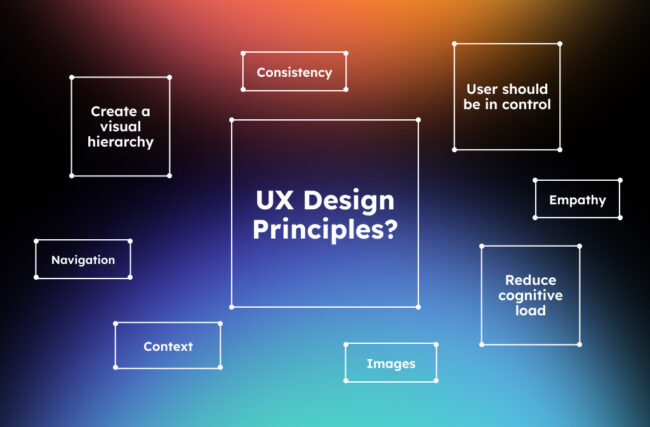While some argue that designers should stick to their creative roots, others see the immense value in acquiring coding skills.
Coding skills enable designers to bridge the gap between concept and reality, ensuring that their designs are not only visually appealing but also technically feasible.
This knowledge fosters a more collaborative and efficient relationship with developers, as designers can effectively communicate their ideas and understand the limitations and possibilities inherent in web development.
It’s not about replacing developers or diluting design skills but about enhancing the designer’s toolkit, making them more adaptable, and improving their ability to create impactful, user-centered designs.
1. Basic Understanding of UX/UI Principles

While not coding skills per se, a solid understanding of UX/UI principles is essential for designers who code. This knowledge ensures that their technical skills are applied in a way that prioritizes user needs and enhances the overall user experience. If you need a tool that can help you with UX/UI, you should learn about PixelFree Studio.
Learning about UX/UI principles helps designers create more intuitive, accessible, and enjoyable digital products. It informs their coding decisions, ensuring that technical implementations serve the user’s needs and contribute to a cohesive, user-centered design strategy.
2. HTML and CSS
HTML (HyperText Markup Language) and CSS (Cascading Style Sheets) are the backbone of the web, defining the structure and style of web pages. For designers, understanding HTML and CSS is crucial for translating design concepts into live, functional websites.
This knowledge allows designers to experiment with layout, typography, color schemes, and responsive design techniques, ensuring that their visions are realized with accuracy and creativity.
Learning HTML and CSS empowers designers to make informed design decisions, considering the limitations and capabilities of web technologies. It enables them to prototype their ideas quickly, test user interactions, and adjust their designs based on real-world constraints.
Familiarity with these languages facilitates better communication with developers, as designers can articulate their ideas more precisely, reducing misunderstandings and streamlining the development process.
3. JavaScript and jQuery

JavaScript, often accompanied by libraries such as jQuery, introduces interactivity and dynamic content to web designs. For designers, learning JavaScript means moving beyond static pages to creating engaging, interactive user experiences. From simple animations to complex web applications, JavaScript opens up a world of possibilities for enhancing usability and engagement.
Understanding JavaScript allows designers to prototype interactive elements themselves, test the usability of their designs, and provide developers with clearer specifications. It also encourages a more iterative and user-centered design process, where designers can quickly adjust and refine interactive elements based on user feedback.
4. Front-End Frameworks
Front-end frameworks offer pre-designed components and utilities that speed up the development process and ensure consistency across designs. For designers, familiarity with frameworks like Bootstrap or Tailwind means being able to prototype and implement designs more efficiently, leveraging a vast library of responsive, customizable components.
Learning to use these frameworks enhances a designer’s ability to create consistent, scalable, and responsive designs. It also fosters a deeper understanding of modern web development practices, enabling designers to work more effectively within development teams and contribute more directly to the project’s technical aspects.
5. Version Control

Version control systems, particularly Git, are essential tools for managing and collaborating on software projects. For designers, learning Git means being able to track changes to their designs, collaborate more effectively with developers, and contribute directly to the project’s codebase.
Knowing Git allows designers to participate more fully in the development process, from contributing code to reviewing changes and understanding the project’s evolution. It demystifies the software development workflow, enabling designers to work more autonomously and take greater ownership of their projects.
Benefits of Learning to Code for Designers
The advantages of learning to code for designers are manifold. Firstly, it fosters improved collaboration with developers. Designers with coding skills can effectively communicate their ideas, understand technical constraints, and participate more actively in the development process. This synergy between design and development leads to more efficient workflows and higher-quality digital products.
Secondly, coding skills grant designers greater control over their projects. They can prototype, test, and refine their designs with a high degree of autonomy, reducing reliance on developers for every iteration. This not only speeds up the design process but also allows designers to explore more creative solutions within the technical framework of the web.

Moreover, coding knowledge enhances creativity and problem-solving. Designers who code can push the boundaries of what’s possible, experimenting with new interactions and dynamic content that enrich the user experience. They’re equipped to tackle design challenges with a broader toolkit, finding innovative solutions that blend aesthetics and functionality.
Finally, coding skills significantly increase a designer’s marketability. In a competitive job market, the ability to design and code sets individuals apart, opening up opportunities in web design, UI/UX design, and even front-end development. Employers value the versatility and comprehensive skill set of designers who can bridge the gap between design and development, making them highly sought after in the tech industry.
Learning Path and Resources
By learning how to code as a designer can seem daunting, but a wealth of resources is available to ease the process. Online platforms like Codecademy, Udemy, and freeCodeCamp offer courses tailored to beginners, covering everything from HTML and CSS to JavaScript and Git. These platforms provide interactive lessons and projects that allow learners to practice as they go, building a solid foundation of coding skills.
Community support is also invaluable. Forums like Stack Overflow and communities like GitHub offer opportunities to ask questions, share projects, and learn from experienced developers and designers. Participating in open-source projects can be particularly rewarding, offering real-world experience and the chance to contribute to meaningful projects.
Consistent practice is key to mastering coding skills. Designers should seek out small projects that allow them to apply their learning, whether redesigning their portfolio site, creating interactive prototypes, or contributing to team projects. Over time, these practical experiences build confidence and competence in coding, enhancing a designer’s ability to create compelling, technically sound digital products.
In Conclusion
The question of whether designers should learn to code is met with a resounding yes. The benefits of coding skills extend far beyond the ability to implement designs; they enhance collaboration, creativity, and career opportunities.
With the right resources and a commitment to practice, designers can acquire the coding skills that will transform their approach to digital design, making them more versatile, innovative, and valuable professionals in the tech industry.
